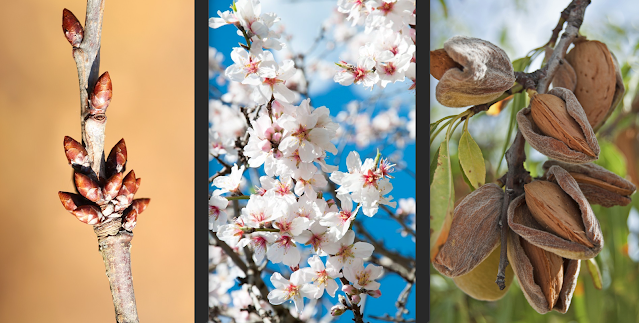Almond Tree (Prunus dulcis) ~ Identity [Part 1]: Past, Present and Future
Have you ever noticed the questions people ask when they first meet you? They usually ask what your name is, what you do for work, or where you go to school. They don’t ask, “who are you?” It’s a simple question, but a jarring one. If someone asked you that question right now, how would you respond?
Perhaps you’d revert to one of the former questions by giving your name, your occupation, and so on. But those things aren’t really who you are. An ancient Greek maxim states simply: “Know yourself.” Do we truly know ourselves? Or do we only have a handle on who we are with relation to external circumstances like jobs or families?
Socrates argued that it’s important to know ourselves so that we can understand our meaning in life. He said, “the life unexamined is not worth living.” But how can we truly know ourselves? We are lost to ourselves, and this is nothing new, as proven by the many ancient cross-cultural adages prompting us to find ourselves. G.K. Chesterton said it well when he wrote, “Every man has forgotten who he is. One may understand the cosmos, but never the ego; the self more distant than any star.” [1]
According to the Bible, we are not who we are meant to be. Our identity has been compromised because of sin. When Jesus told Nicodemus he had to be born again, Nicodemus responded by asking, “How can a man be born when he is old? Can he enter a second time into his mother’s womb and be born?” Jesus explains that we must be reborn not in a physical way, but “born of water and the Spirit.” (John 3v3-5). The concept is complex, but the purpose is simple: We need to be remade into a new identity so that we can truly live. We can’t follow Christ and hold on to our old stuff. We must hand ourselves over to Him completely. It’s no wonder there are so many passages in the New Testament that describe a sort of death that leads to a spiritual rebirth that heralds our transformation. [2] There’s no better place we can bring ourselves to be remade than the Maker Himself. Consider, for instance, that you live in a small village. In the town square there’s a grocer’s, a baker’s, and a clock-maker’s. Perhaps you have a clock in your home that was purchased from the clocksmith. If that clock breaks, would you take it to the grocer or the baker? Of course not. You’d take it to the clocksmith, because he was the one who fashioned it with his own hands. He expertly put every cog and wheel into place, and no one knows the intricate inner workings better than him. He was there when the clock was created, and there on the day it was sold.
In the same way, our hearts are broken because of sin. We need a total revamp. The best place to take it for repair is to the One who made it, because He can restore it better than anyone else. When we give our lives to Jesus, we begin a process of restoration in which He’s making us into the person we were always meant to be.
When I try to imagine how God, my Creator, sees me, I remember the lampstand of the temple. Exodus 37v17-24 describes the shape of the golden lampstand as being like an almond tree. It specifically describes the form as having calyxes, flowers, and cups. Interestingly, a real almond tree could never appear in this way. In early spring, an almond branch is covered in small woody buds, the calyxes. Later, the calyxes fade away and are replaced by lovely white flowers. Eventually the branch comes into full leaf, and in autumn it is covered with fuzzy green cups that break open to reveal the almond nuts hidden inside.
When God looks at you, He sees you like this almond tree. He sees you exactly as you are in this moment. But He also sees who you’ve been, and He sees the person He’s making you into. It’s a profound mystery, but it solidifies that there’s nowhere else we can go for a clear picture of ourselves than the God who is outside of time. People we know and love may see us clearly, but they can never behold us as fully as God does because their perception is temporally limited. As Max Lucado says so beautifully, “His eyes see us not as we are, but as we are intended to be.” [3]
I find it fascinating that after His resurrection, Jesus appeared in various forms to His disciples. 1 Corinthians 15 describes how Jesus appeared to Peter, and to the other of the twelve disciples, then to more than 500 people at once time, then to James His brother, to the other apostles and lastly to Paul. The apostle John describes Jesus as having white hair (Revelation 1v14) while Paul describes the appearance of Jesus as “one untimely born” (1 Corinthians 15v8). Theologian Ken Boa believes that we will exist simultaneously in all our ages in our resurrected bodies. [4] Perhaps we will even see each other in this way. It is marvelous to imagine!
If you want to be known, if you want to discover yourself, there is no better place to go for definition and restoration than the One who made you and fully sees you. God holistically and simultaneously beholds your past, your present, and your future. And He loves you. Be bold enough to trust Him with all of yourself today.
[1] Chesterton, G. K. (2013). Orthodoxy. London: Deadtree Publishing.
[2] See Luke 9v23-25, John 12v24-26, Romans 6v1-11, Galatians 2v20, 1 Corinthians 15v31, Philippians 1v21, Colossians 3v3.
[3] Lucado, M. (2004). Six hours one Friday. Portland, OR: Multnomah Books.
[4] Personal conversation



-5.adapt.945.2.jpg)
Comments